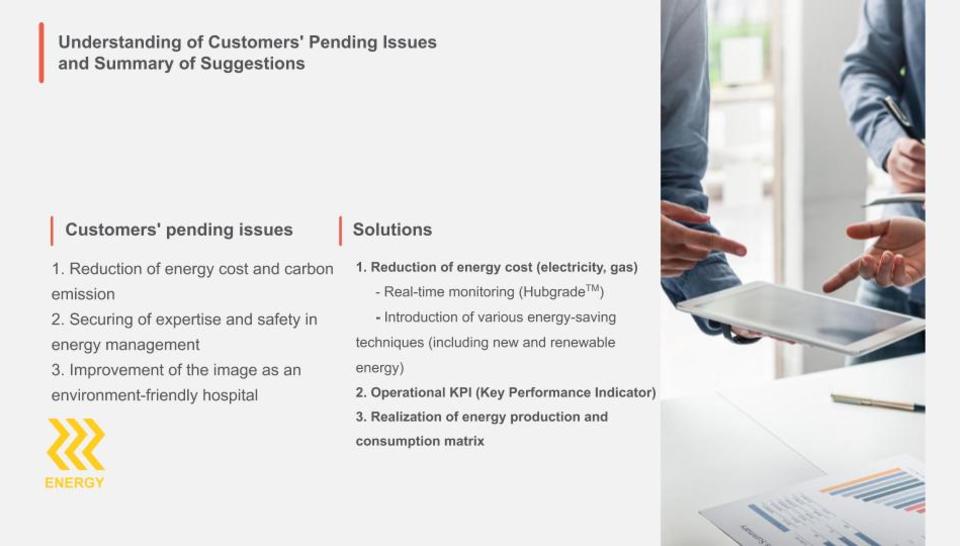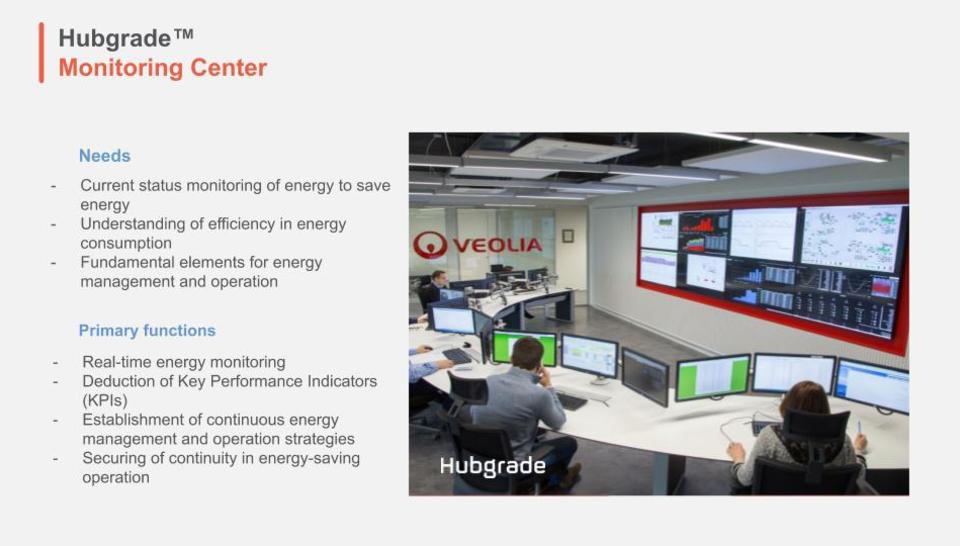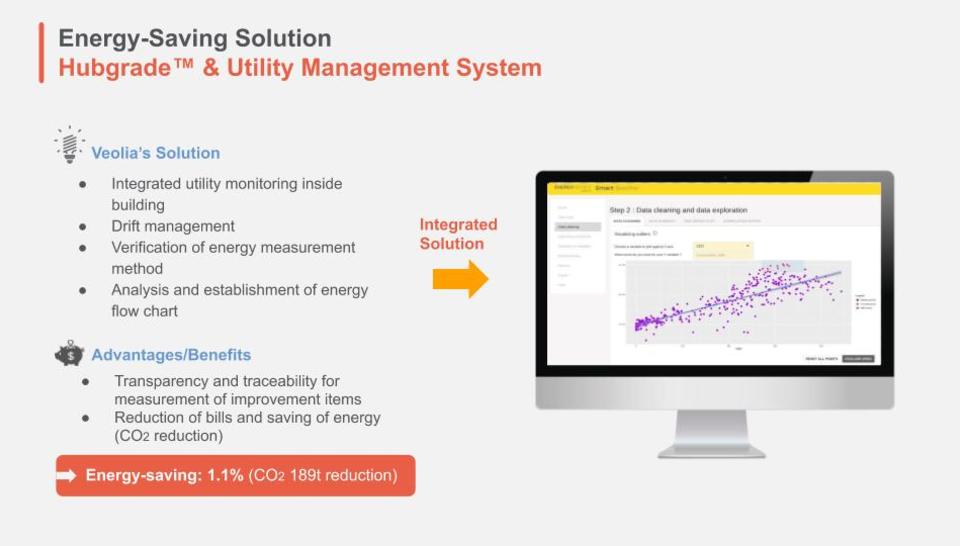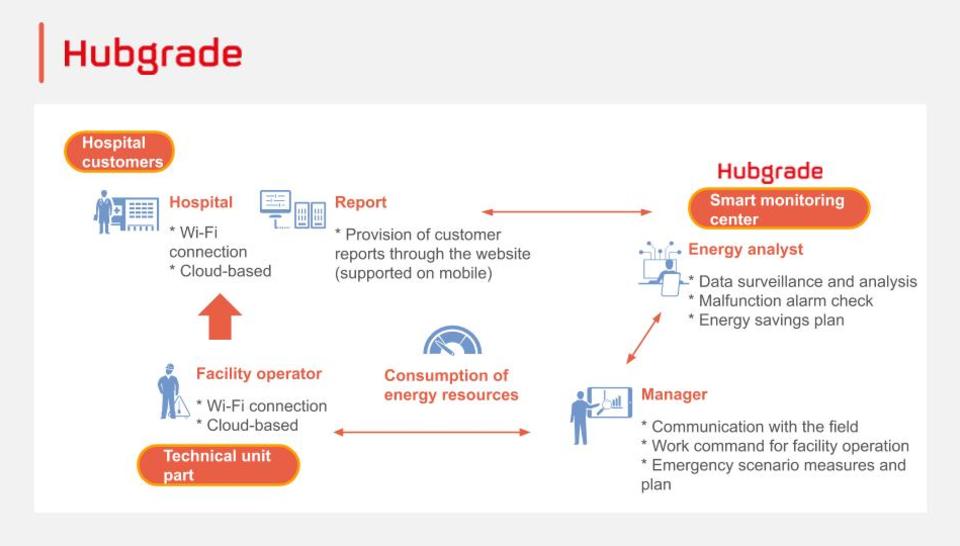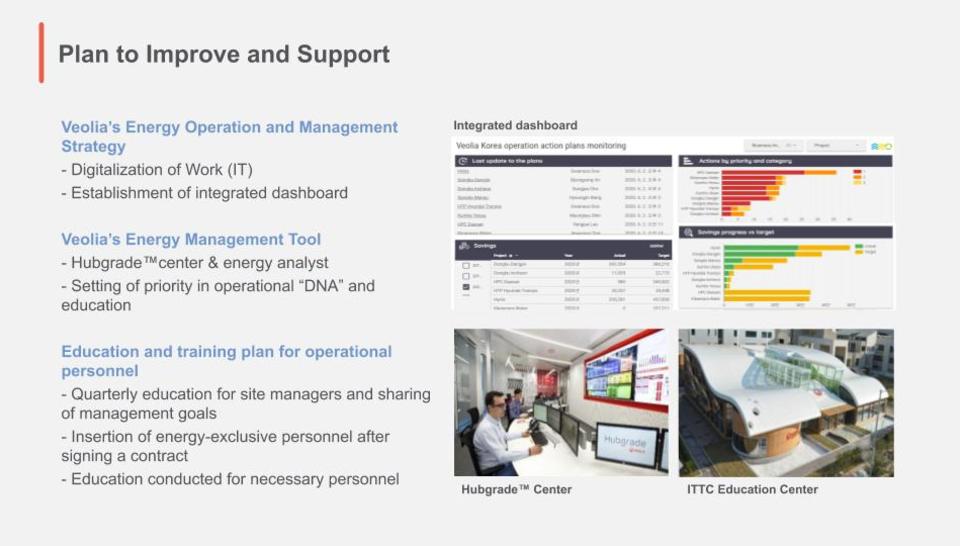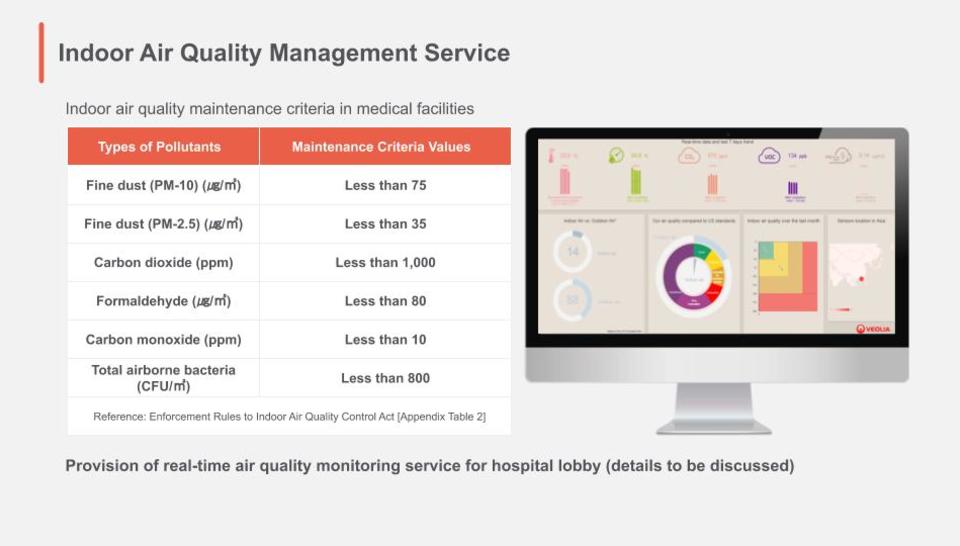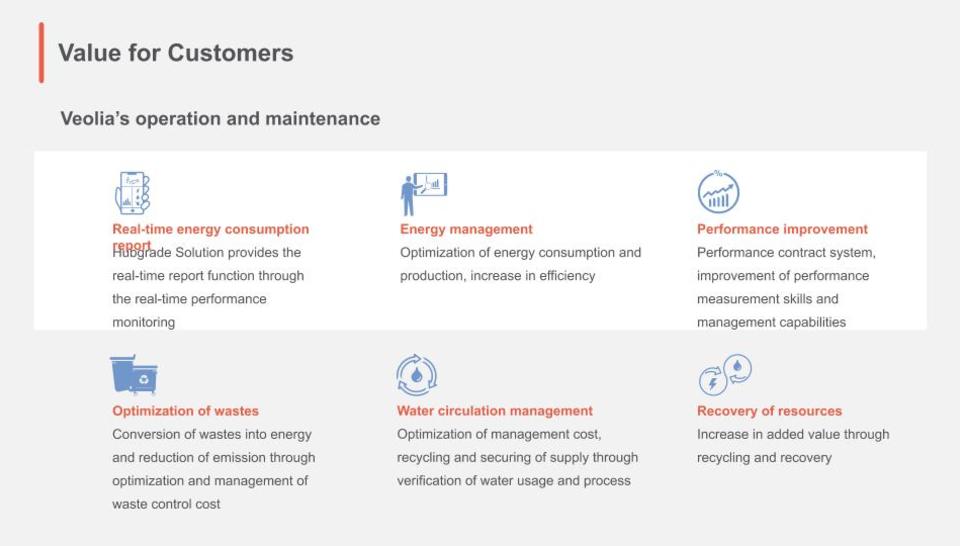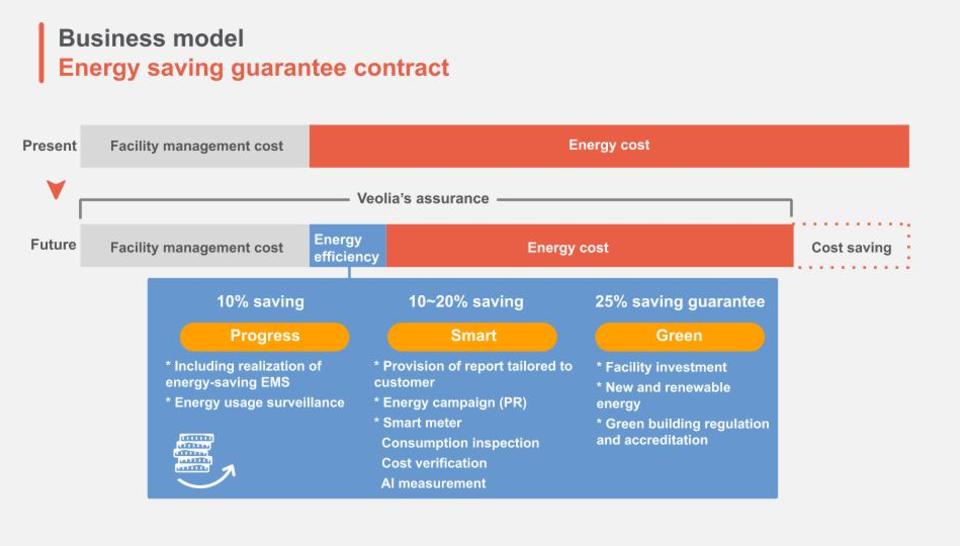Energy Efficiency in Buildings
To prepare the global climate change, various efforts to save energy are being actively conducted. Especially the building (Commercial, Residential and Public buildings) energy consumption is over 20% of the total energy consumption in Korea.
The government has implemented various institutions and policies to save building energy, announced its plan to raise the previous reduction goal of greenhouse gas emission from buildings by 26.9% until 2020. Therefore, policies regarding efficiency in the building energy are implemented fast, but the level of building owners and market understanding is still relatively low in general.
Hubgrade is the name given to Veolia’s smart monitoring centers for water, waste and energy management.
Veolia’s analysts monitor the energy systems of a very wide range of buildings in real time and manage them remotely and on-site in order to optimize their energy and environmental performance.
Office buildings, multi-use buildings, hospitals, schools, shopping malls, data centers, hotels and airports - all these buildings and others, whether privately or publically owned, are equipped with a multitude of systems: heating & cooling, lighting, hot water production, ventilation and so on. These systems may combine different types of energy, such as heat, electricity, and gas. As demand grows, so does energy consumption. And the way the energy is used is often far from optimal.
To gain better control over consumption, the systems are fitted with smart sensors that transmit data in real time.
The data is centralized via a digital network at a smart monitoring and optimization center. Then it is analyzed by experts in energy efficiency in buildings.
This audit can translate into immediate action by adjusting settings or organizing work to be done on the system if there is a malfunction.
Hubgrade gathers real-time data from connected infrastructures in various sites:
• municipal water plants and distribution networks
• waste collection systems
• recycling plants
• buildings (office buildings, multi-use buildings, hospitals, schools, shopping malls, data centers, hotels, and airports)
• district heating and cooling systems
• industries



